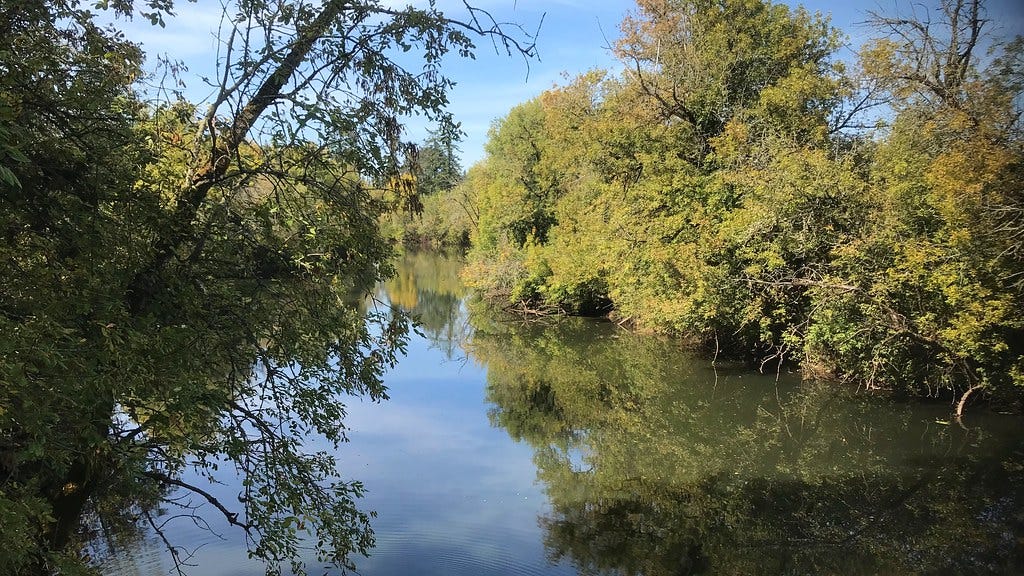The Way: Schuberth on the Literacy Crisis, Estep on Trees & Climate, Garson on Homelessness
Don't forget to recommend contributors for our #GovernorGoals series
Did you miss “The Liftoff”?
Read the latest version here
You shouldn’t have to be an “Insider” to be in the know.
Editor’s Note:
The economy sank (for most, but not everyone). The way we worked changed (for some more so than others). The family structure morphed (resulting in new opportunities in specific cases, but disruption in many other instances). These tectonic shifts combined to alter the norms and institutions that existed in the 1960s. The same sorts of shifts are underway today, arguably with even greater force. Chaos generated in the 1960s sent the US into a period of tumult with decades-long aftershocks. We can and must avoid repeating that past as we respond to these uncertain times.
The cliffnotes on the 1960s and 1970s would tell the tale of distrust and disassociation. Mainline Protestant churches lost their congregations. Access to higher education institutions and economic opportunity more broadly amassed in the hands of a few specific demographic groups. Political parties shunned moderate stances to solidify the support of more reliable, partisan voters. Cumulatively, doubt in government spread and reliance on individualistic thinking became common. Of course it is easy to look back at the 60s and wonder why more wasn’t done to make access to the key sources of stability and growth available to Americans of every race and region.
When immense disruption occurred in the 1960s, we failed to examine the incentives guiding the institutions that grew out of touch with society’s needs. Higher education institutions prioritized tuition over curriculum development. Media companies searched for advertisers instead of investigative journalists. Politicians focused on fundraising from a few in place of making policies for the many. All of these distorted end goals allowed the aftershocks from positive and negative disruptions to our families, faiths, and professions to persist for decades. Driven to pursue the wrong outcomes, these institutions acted in ways that made some Americans more resilient to future shocks, but left many others exposed to the chaos ahead.
Today, fragility is still not evenly distributed. Many exist on the edge of a cliff that could bring housing instability, financial ruin, and cuts to social ties. Meanwhile, we’ve seen a certain class of people not only persist through this pandemic and related disruption but profit from it. Policymakers, now, like in the 1960s, will fail if they try to predict how, when, and to what extent tectonic shifts will cause unease and misery. Hopefully, our officials have learned that simply pursuing more economic growth will not suffice. What they can do instead is to look at the underlying incentives of the institutions we rely on to increase resiliency among all Americans.
Here are some incentives to start changing: higher education institutions should be assessed and rewarded by the extent to which they bring in diverse students and turn them into graduates ready to join the workforce; media companies need the financial independence to produce news that’s directed to keep citizens informed, rather than enraged and distracted; and, similarly, politicians should be re-elected for their efficacy in office rather than their proficiency at dialing for dollars. Another awry incentive ripe for alignment with societal goals includes corporations seeking good quarterly return.
Trust in a time of uncertainty cannot be easily valued by the market, but it's essential to social progress and cohesion. As long as our institutions are encouraged to behave in ways that sow greater chaos and inequality, our future will be more cataclysmic than communal and collaborative.
Here’s to a better Oregon,
Kevin
To look forward to:
Our #GovernorGoals series. Learn more about how you can help shape the future of our state here.
Jessica Gomez encourages Oregonians to keep an open mind when it comes to developing our energy portfolio.
Rich Wandschneider reflects on changes to Wallowa County. Politically, demographically, and culturally, it’s a different place than it was in 1970s.
Casey Kulla offers policy suggestions to improve Oregon’s water quality and quantity as climate change messes with when and how much rain the state receives.
Jim Moore looks back at when multi-member districts were the norm in Oregon and how that structure influenced outcomes in Salem.
To read:
Aeric Estep highlights the importance of keeping trees in the ground to assist with carbon sequestration.
read more here.
Jenn Schuberth points out that Oregon has literacy crisis — too few third graders are on pace for future academic success.
read more here.
Jared Garson discusses the importance of a housing first strategy for addressing homelessness.
read more here.
Tam Moore analyzes the the flags of Eastern Oregon as signs of polarization.
read more here.
To do:
Share The Oregon Way with three friends
Join our editorial team or nominate someone to join
Tell us how we can improve!
Photo credit: "Tualatin River NWR" by USFWS Pacific is licensed under CC BY-NC 2.0




